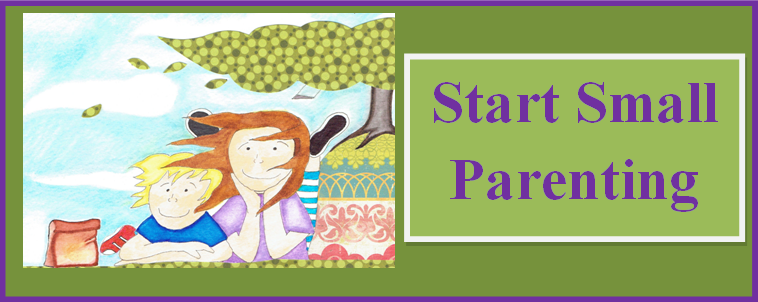
A Do-Over is an opportunity to repeat a behavior with the guidance of the parent.
Any time you want to instill a new behavior or you want your child to have more respectful behavior – these are good times for Do-Overs. From chores to sibling disagreements, re-doing the scene not only allows for another try at doing it respectfully, but it stops the child’s world. When a child’s world stops, this gets their attention, interrupts the off-track behavior, and presents a learning opportunity from the inside.
Do-Overs also allow the child to better understand what the parent is asking. This helps the behavior to really sink in as a deeper groove is made in the brain pathways toward the positive behavior.
What Does a Do-Over look like?
Here are three examples:
- Let’s say your child has learned that it’s respectful to put his toys away when he is done playing. Yet, he runs off to play outside, leaving his blocks scattered over the living room floor. Bring him back to the living room and have him re-do the scene. Give him a chance to repeat the respectful behavior. You can help him clean up and sing a clean-up song to make it more fun. Then he can go play outside. This is a Do-over.
- What if you have told your child that when he cleans his room, he can go to his friend’s house? Your son doesn’t want to and angrily scatters his Legos on the floor. When the child calms down, this is a good opportunity for a Do-Over.
- Your daughter runs up to your son and angrily pushes him. You find out that she didn’t want him to play with her Little Pony. With your help, she asks her brother to give back her Little Pony. She is having a chance to redo the scene.

Guidelines for a Do-Over
- Use a kind, firm voice and tell your child to repeat the act respectfully.
- Give him a few chances, but do not make it a test of wills.
- If there is resistance, provide two choices. “You can clean up the Legos now or after snack-time.”
- The child can continue with his activities after he repeats the act.
- Next time toys come out, Mom can ask to show what he’s learned
- If not, he is the one stopping or slowing down his world by his own actions.
This works great for disrespectful attitudes and angry acts. Remember the importance of keeping your own anger in check. The connection between you and your child is the most important thing.
Children’s off-track behavior may not always look like defiance. My son had difficulty stopping a game on his Kindle when I asked. Even if I gave a 2-minute warning, he would say, “One more minute,” or “When I finish this level of Temple Run.” It seemed these periods of time got longer and longer. So instead of continually telling him how I wanted him to get off right away, I let him practice by re-doing the act. I told him to do a Do-Over, this time turning off the Kindle within the allotted 2-minute warning. The next time, I reminded him of what we practiced and since that time, it has stuck.
Once you’ve tried the Do-Over, look for similar tasks or behaviors and see if the child has learned the new behavior. “Show me that you know how to do a Do-Over.”
Give the child credit for any improvement. Your positive voice is a powerful teaching instrument.
Drawing on the Wall
The walls in the kitchen have been freshly painted. Three-year-old Mary draws on them with her crayons. Her mother finds her and is furious. She sends Mary to her room. She hopes her daughter will outgrow this behavior. The time-out to the room is form of punishment mixed with the mother’s Wait-and-See attitude.
Meanwhile, alone in her room, Mary is crying. She did something very bad but isn’t sure what she did. She knows her Mom is angry. What Mary really wants to do is to keep on drawing. She sees the space behind her bed and begins to color on the wall there. Her mother won’t see that! What Mary has learned is that negative behaviors are okay if she doesn’t get caught.
What if the mother, instead of using a time-out or some form of punishment, tries a Do-over?
Mother sits Mary on her lap. “Walls are not for drawing on. What else can we use?” Together they come up with many ideas – big pieces of paper on the table, chalk on the driveway, paint on the easel. They decide on Butcher paper taped to the walls. Mother is there as Mary does a Do-Over and colors on the Butcher paper.
Not Just for Children
We can try Do-Overs as well. We all make mistakes as parents. This is a perfect practice to use on ourselves, in front of the kids, so they can see how we are all learning, even as adults.
How to Practice
Perhaps your child has a disrespectful behavior that keeps repeating. Each time it appears, you correct your child but the behavior persists. Your words and actions might even resemble (gasp!) nagging. In the past you have corrected your child but the behavior persists. Know that this behavior will appear again and be ready for it with the offer of a Do-over. This time, you give them the chance to have a positive corrective experience.
If you haven’t had an opportunity to hold a Family Meeting, do it this week. You can check in there with your family about Do-overs and any other changes that are being introduced.
|

